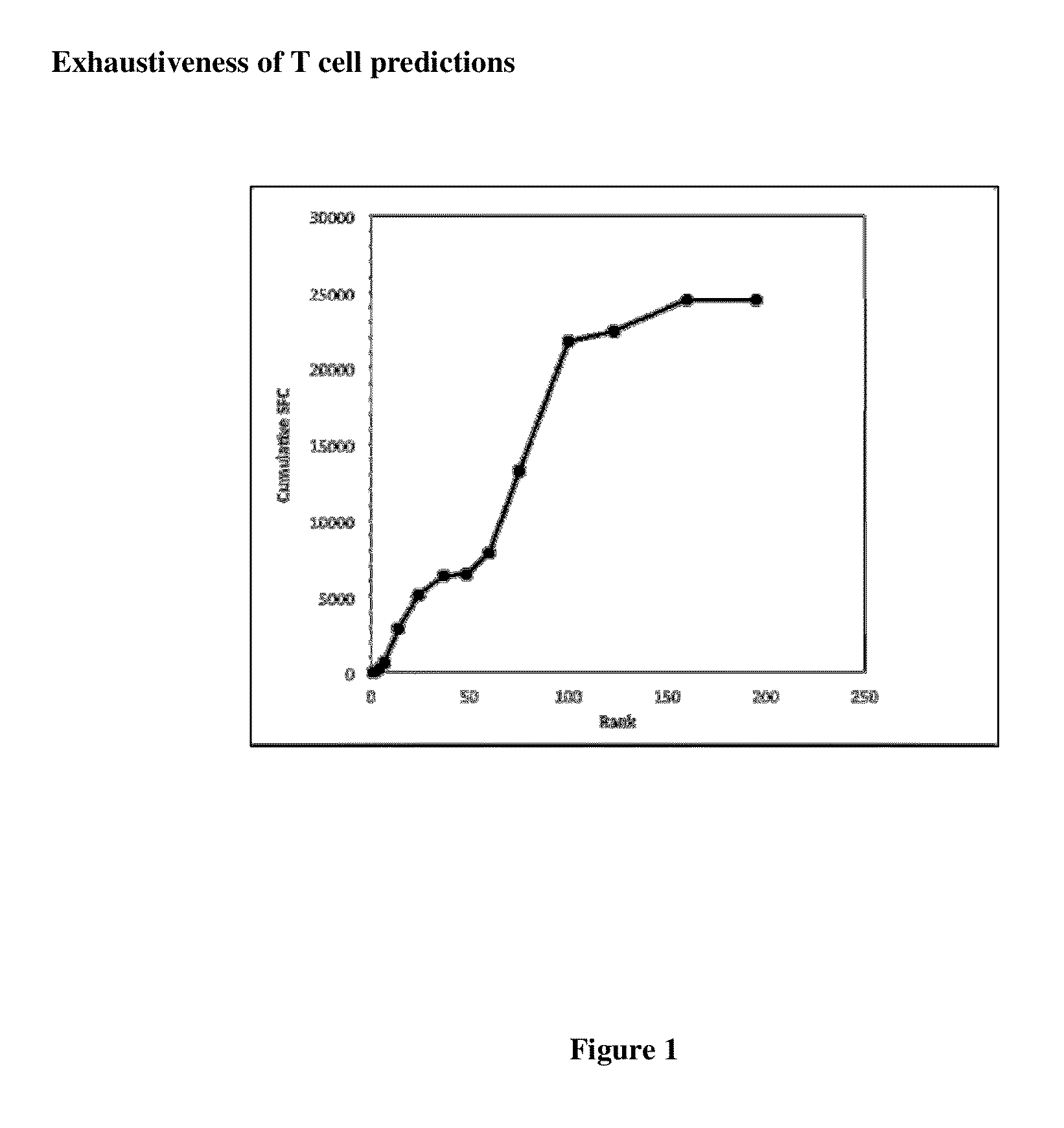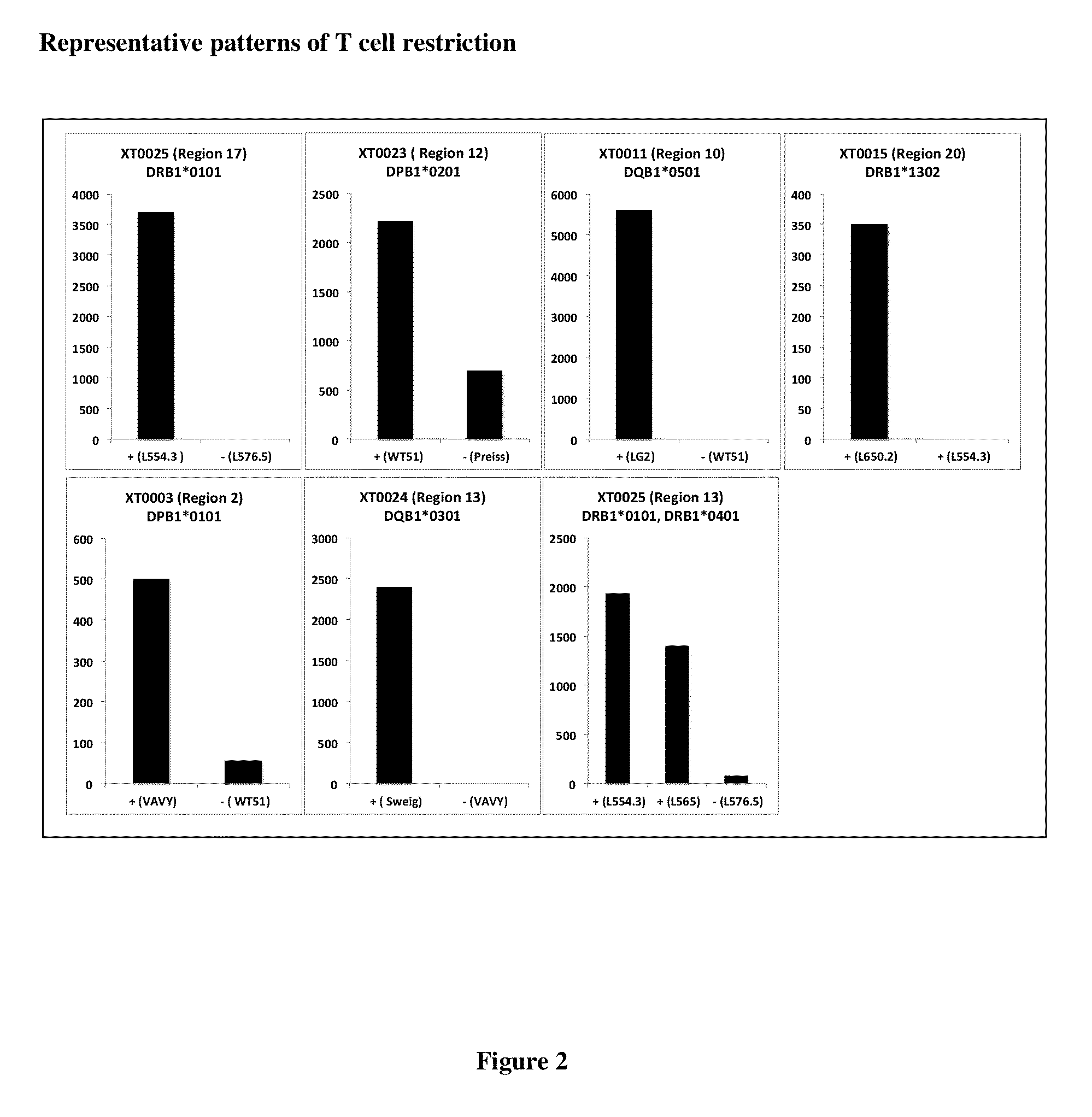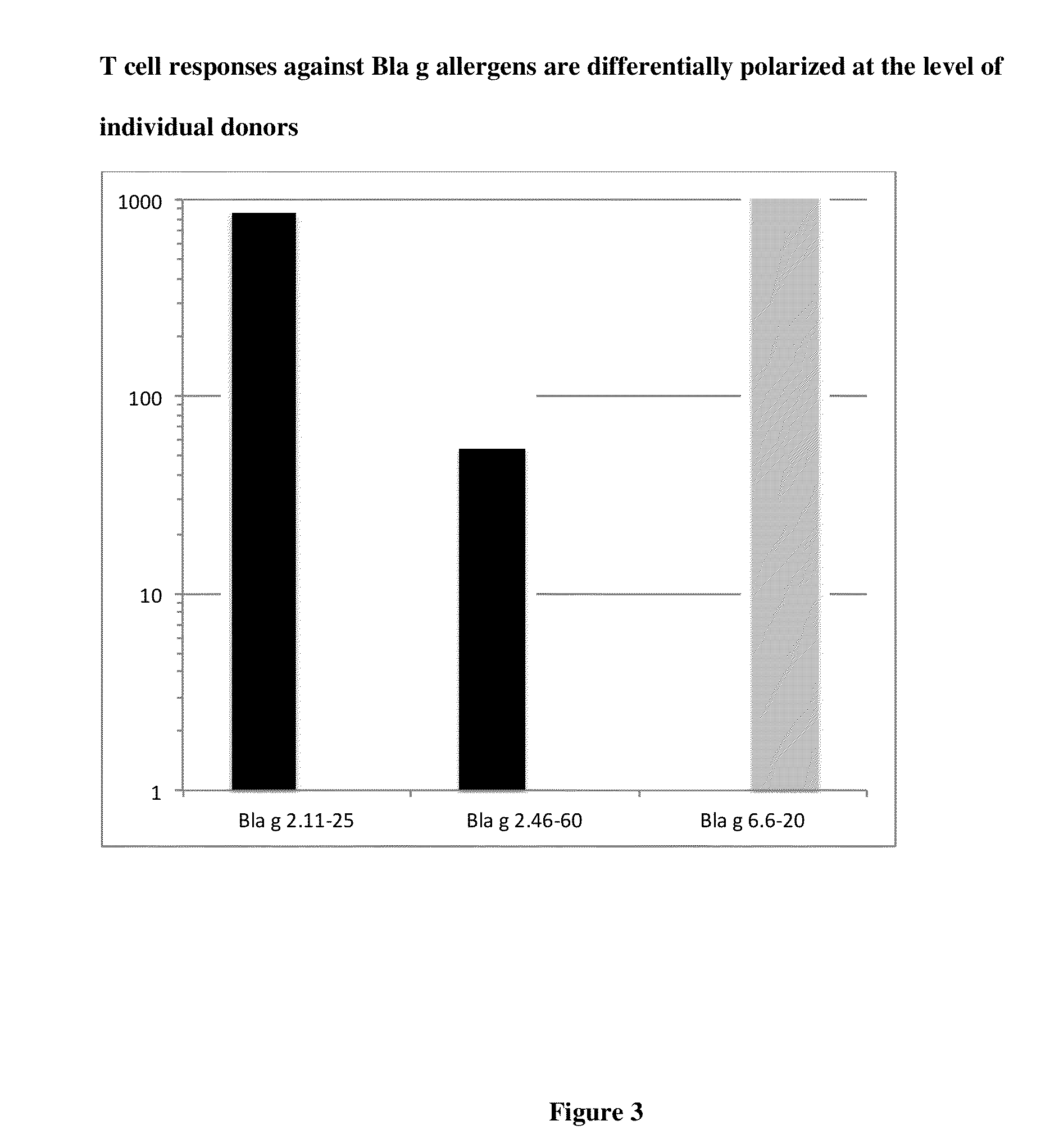T cell epitopes from cockroach and methods of making and using same
a technology of t cell epitopes and cockroaches, applied in the field ofcockroach proteins and peptides, can solve the problems of limited reports on the effectiveness little knowledge of corresponding t cell responses
- Summary
- Abstract
- Description
- Claims
- Application Information
AI Technical Summary
Benefits of technology
Problems solved by technology
Method used
Image
Examples
example 1
[0244]This example includes a description of various materials and methods.
[0245]Patient Donor Population:
[0246]Patient recruitment for this study was performed under three IRB protocols. The first two were conducted at Johns Hopkins University, one as part of the NIAID-funded Inner City Asthma Consortium (ICAC) (NIAID Protocol Number ICAC-18), and the second NIAID sponsored, but separate from ICAC. All participants came from the Baltimore area, were aged 18-55 and had a history of allergic rhinitis and / or asthma, and sensitivity to Cockroach. Thirty individuals provided 100 ml of blood for PBMCs and 20 ml serum samples. A subset of 9 study participants provided samples both prior to and 6 months after the initiation of subcutaneous immunotherapy for German Cockroach (SCITCO), after receiving biweekly dose escalations for 11-12 weeks followed by 14 weeks of weekly maintenance injections. Clinical case histories and other information were collected and recorded by the local clinical ...
example 2
[0267]This example includes data demonstrating heterogeneity and immunodominance in T cell response to German Cockroach allergens in allergic donors.
[0268]Disclosed herein is a strategy to identify T cell epitopes derived from common allergens based on the observation that while responses to complex allergens in humans are very heterogeneous and involve recognition of a large number of epitopes, a relatively small number of the most dominant and prevalent responses encompass a significant fraction of the total response (32). As disclosed herein, these epitopes can be predicted on the basis of their capacity to bind a panel of HLA class II molecules representative of most frequent alleles expressed at the DR, DP and DQ loci. This approach was used as an initial screen in an effort to identify T cell epitopes derived from German Cockroach allergens, denominated Bla g.
[0269]To identify dominant Bla g T cell epitopes, PBMC donations were obtained from 34 different allergic donors. Aller...
example 3
[0276]This example includes a description of data demonstrating that the T cell epitopes identified account for a significant fraction of the response.
[0277]The thoroughness of the epitope identification studies was next evaluated by three different types of analyses. First, since the candidate epitopes were identified on the basis of predicted HLA binding, the present inventors wanted to exclude that a large fraction of T cell epitopes might have been missed by the predictions.
[0278]First it is noted that because of the low stringency used in the prediction a large fraction of the sequence of each of the Bla g proteins would be covered by the predicted peptides tested. Indeed, as shown in Table VIII, an average of 69% of the overall sequences were covered, corresponding to about 42% of unique 15-mers, considering a ten-residue overlap, spanning the entire sequence. Second, the present inventors considered having missed a large fraction of the epitopes unlikely, based on previous Co...
PUM
| Property | Measurement | Unit |
|---|---|---|
| Pharmaceutically acceptable | aaaaa | aaaaa |
| Immunogenicity | aaaaa | aaaaa |
Abstract
Description
Claims
Application Information
 Login to View More
Login to View More - R&D
- Intellectual Property
- Life Sciences
- Materials
- Tech Scout
- Unparalleled Data Quality
- Higher Quality Content
- 60% Fewer Hallucinations
Browse by: Latest US Patents, China's latest patents, Technical Efficacy Thesaurus, Application Domain, Technology Topic, Popular Technical Reports.
© 2025 PatSnap. All rights reserved.Legal|Privacy policy|Modern Slavery Act Transparency Statement|Sitemap|About US| Contact US: help@patsnap.com



